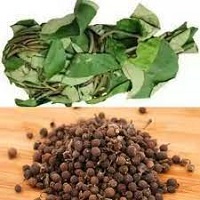Tamarindus Indica Medicinal Uses & Pharmacology
Tamarindus Indica Medicinal Uses & Pharmacological Activity

According to Wikipedia, Tamarindus indica (Tamarind) is a tropical African leguminous tree (family Fabaceae) with edible fruit.
The genus Tamarindus is monotypic, meaning that it contains only this species.
Normally, it requires a dry climate so the region it grows extends Africa to Senegal in the west, Ethiopia in the east, and Sudan, Mozambique, and Madagascar in south
Tamarindus Indica Description
The tamarind tree is one of the most vital multipurpose tropical fruit tree species in the Indian subcontinent.
It produces pod-like fruit that contains a brown, edible pulp used in cuisines around the world. The pulp is also used in traditional medicine and as a metal polish.
The leaves are usually evergreen but may shed temporarily in very dry areas during the hot season
Tamarind fruit was at first believed to be produced by an Indian palm, as the common name Tamarind comes from the Persian word “Tamar-I-hind,” meaning the date of India.
Tamarindus Indica Medicinal Uses
Every part of the T. indica plant (root, bark, flower, fruit, seed, and leaves) not only has rich nutritional benefits and broad medicinal uses but also has industrial and economic importance.
The fruits, flattish, bean-like, unevenly curved, and bulged pods, are borne plenty along the new branches.
The mature fruit pulps can be sweet or sour and are used for various culinary, medicinal, food, and ornamental purposes.
Tamarindus indica fruit extract is classified as a skin conditioning
In most African countries, it is also a common beverage. It is also frequently used in tropical countries because of its laxative and aphrodisiac properties.
T. indica is an inexpensive and easily accessible plant. It is high in phytochemicals, essential amino acids, and vitamins.
In traditional medicine Tamarindus indica uses is beneficial in the treatment of the following ailments:
- Helminthes infections
- Wound healing
- Abdominal pain
- Diarrhea and dysentery
- Malaria and fever
- Inflammation
- Cell cytotoxicity
- Constipation
- Gonorrhea
- Eye diseases
Tamarindus indica has numerous chemical constituents and is high in phytochemicals. Therefore it possesses the following activity:
- Antidiabetic Activity
- Antimicrobial Activity
- Hepatoprotective Activity
- Antiasthmatic Activity
- Antivenomic Activity
- Antioxidant Activity
- Antimalarial Activity
- Laxative Activity
- Anti-Hyperlipidemic Activity.
Above all, every part of the plant from root to leaf is useful for human necessities.
With the support of modern techniques, it can be useful in evidence-based medicine in so many health circumstances.
However, there is a need for additional investigation into this plant and its potential anti-inflammatory and antioxidant properties that can help with many diseases.
FAQs on Tamarindus Indica Medicinal Uses
What is the use of Tamarindus indica?
It is used in traditional medicine to treat wounds, abdominal pain, diarrhea, dysentery, parasitic infestation, fever, malaria, and respiratory problems.
Because of its laxative and aphrodisiac properties, it is also widely used in tropical countries
What is the English name of Tamarindus Indica?
Tamarindus indica, also known as tamarind, is a tropical evergreen tree that grows to 40-60 feet (rarely to 90 feet) tall.
It is native to eastern Africa, but it is now widely grown and has naturalized in a variety of tropical and subtropical areas around the world.
Tmarind’s health benefits?
What are the six most important health benefits of tamarind?
- High in antioxidants;
- May have anticancer properties
- May benefit heart health and cholesterol levels.
- Has liver-protective properties.
- It has natural antimicrobial properties.
- May have anti-diabetic properties.
Which illnesses does tamarind treat?
Tamarind is used to treat constipation, liver and gallbladder problems, and stomach disorders. It is also used to treat fevers and colds.
Tamarind is sometimes used by women to treat nausea caused by pregnancy. It is used to treat intestinal worms in children.
Can I drink tamarind water every day?
Can I drink tamarind juice on a daily basis? Yes. Consuming moderate amounts of tamarind juice on a daily basis can benefit your skin, hair, and overall health in a variety of ways.
Is there anything bad about tamarind? Does tamarind have side effects?
One of the most common tamarind disadvantages is allergy.
Many people eat it, but it can cause ringworm, itching, swelling, dizziness, fainting, fainting, vomiting, and shortness of breath.
Is tamarind good for your liver?
Fatty liver disease is becoming more common as a result of poor dietary and lifestyle choices.
The tamarind fruit extract has been shown to protect the liver because it contains antioxidants called procyanidins, which fight free radical damage to the liver.
What are the benefits of tamarind for females?
Tamarind Boosts Fertility
Tamarind is used to promote fertility in both males and females due to its high mineral and vitamin C content.
Tamarind’s anti-oxidant properties have a sexual benefit by increasing female fecundity.
Does tamarind put you to sleep?
Yes, some tamarinds are known to cause drowsiness, but for the most part, tamarind can help with insomnia and sleeping disorders to an extent due to the presence of magnesium, ensuring good sleeping patterns.
Is tamarind beneficial to men?
Tamarind is high in vitamin C, which helps to improve sperm quality and lifespan in males. Several studies have found that including vitamin C in the diet helps to prevent sperm deaths inside the testicles and increases sperm count in men.
Is tamarind effective for skin lightening?
Tamarind, which is high in antioxidants, flavanoids, and vitamins C and A, helps to prevent the formation of free radicals;
Tamarind face packs can relieve skin irritation and inflammation. It is also an excellent ingredient for naturally lightening skin tone and reducing dark spots and pigmentation.



